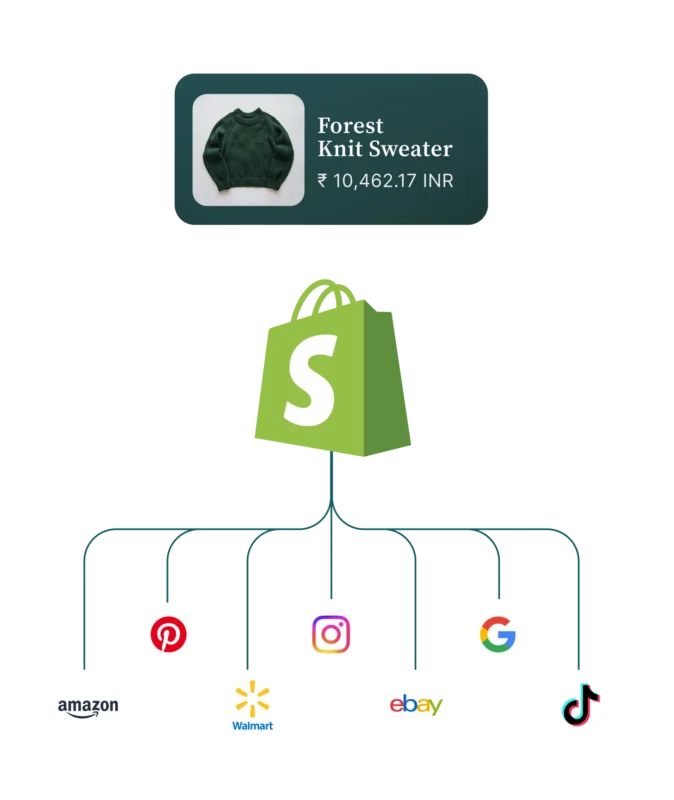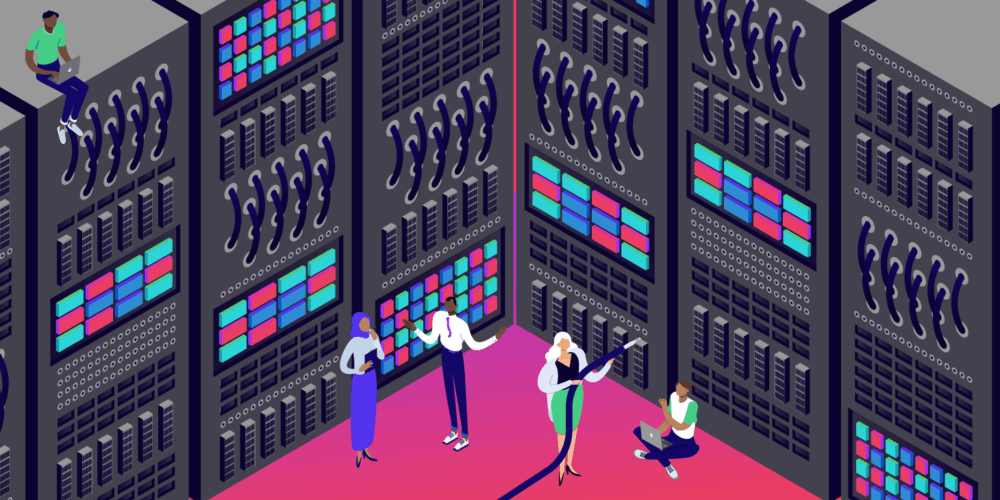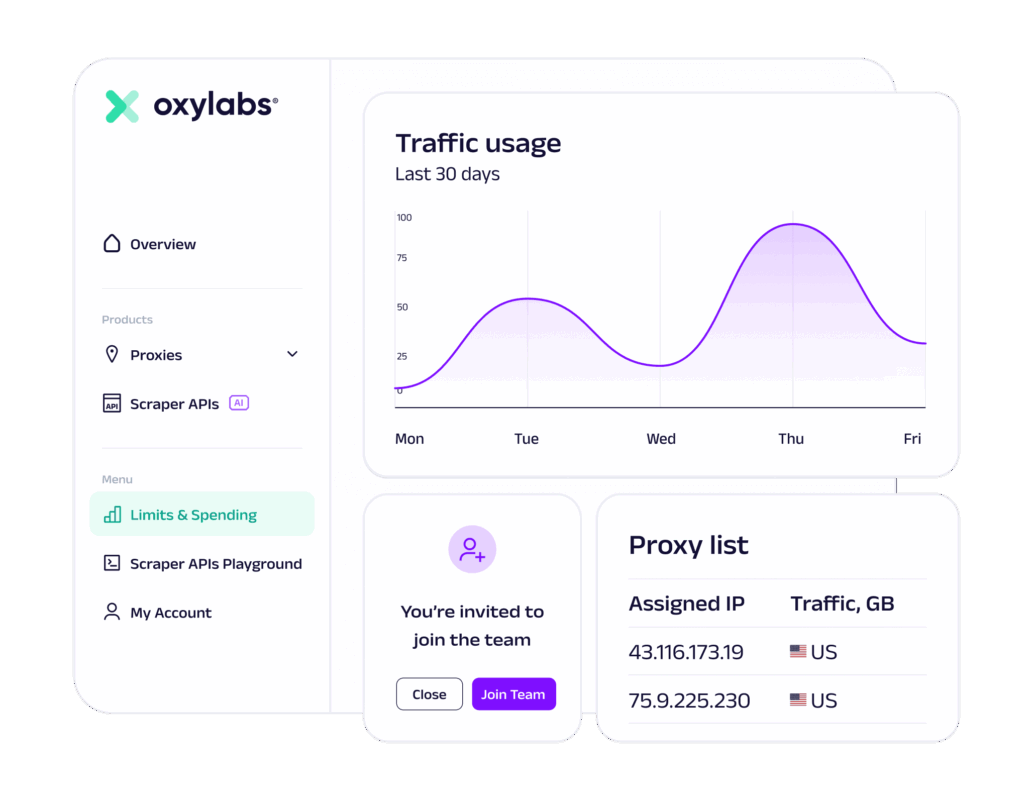TL;DR: What Is Next.js + Shopify?
- Next.js is a React-based framework designed to build high-performance, flexible websites and apps. It supports server-side rendering (SSR), incremental static regeneration (ISR), and edge rendering.
- Shopify Storefront API is a GraphQL API that lets you access live store data like products, carts, and collections.
Used together:
- Shopify handles backend tasks like inventory, checkout, and payments.
- Next.js gives you full control over the storefront’s user interface.
But this is NOT a beginner-friendly way to do things; if all you need is a simple e-commerce store, just go with standard Shopify; it’ll save you potentially weeks of headaches.
If you’re a vibe coder, and you’ve been struggling with getting payments and e-commerce functionality working inside your projects, is this Shopify Storefront API worth a look? Here’s a simple(ish) breakdown of what it is, where it shines, and what you need to know before jumping in.
Spoiler: it’s not really vibe-coder friendly. If you’re a basic-bitch like me when it comes to coding, this kind of stack is going to be A LOT to handle. Still, no one learned anything by being scared of a little complexity, so here’s how you can get your hands dirty with it and what to expect…
What’s Great About This Stack For Vibe Coders

If you’re designing with Framer, Webflow, Figma, or using AI tools like GPT, Replit AI, or Cursor, this headless stack offers real creative and technical freedom. You can basically make it look however you like which is great for custom projects or if you’re doing work for clients and they want something unique.
The main issue with traditional Shopify stores is actually part of the reason why the platform is so popular: it’s insanely simple to use but the downside of this simplicity is rigidity and what you can do with the front-end. Anyone can set up a store, complete with secure payments and a blog, inside a couple of hours.
Using Next.js with Shopify allows you to take advantage of the best tools for both the frontend application and backend ecommerce platform. This guide will show you how to create a Next.js application using the Shopify GraphQL API.
If you’re looking for a completed template of using Next.js and Shopify, you can explore Next.js Commerce. For example, here’s a demo store built with Next.js headless and using the Shopify GraphQL API. This powerful demo includes support for React Server Components and the latest features of the Next.js App Router.
Vercel
But with traditional Shopify stores, you’re locked into Shopify’s theme library, either free or paid, or you have to hire someone to create something bespoke (and that ain’t cheap).
Going the headless route means you get the guts of what makes Shopify tick but you can basically build-out whatever front-end you like. And if you’re au fait with vibe coding tools, this opens up loads of potential applications for this setup, from creating bespoke e-commerce stores for clients to selling your own web apps and tools inside a fully custom store of your own design.
1. Full Design Control
With Next.js, you or a developer can build a fully custom storefront using React components.
You can:
- Export designs from Figma or Webflow and convert them to React.
- Use AI to scaffold pages or query Shopify data.
- Style everything using Tailwind or your preferred CSS system.
2. Built-In Performance Optimization
Next.js includes performance features like:
- Server-side rendering and ISR for faster page loads.
- Edge rendering for regional content delivery.
- Fine-tuned GraphQL queries that reduce payload size and improve load times.
This results in better Core Web Vitals, faster mobile experiences, and improved conversion rates.
3. Backend Commerce Stays Intact
You don’t need to rebuild the business logic. Shopify still handles:
- Inventory
- Checkout flow (with limitations)
- Orders and payment processing
You just replace the frontend — the customer-facing part of your site.
4. No-Code and AI Friendly
While the initial setup requires some development work, the ongoing experience can be handled by a no/low-code operator using:
- AI-generated GraphQL queries
- CMS integration for content updates
- Workflow tools like Zapier or Make
Once the core structure is set, on-going maintenance can be done using tools like Cursor, Claude Code and ChatGPT CODEX. Again, if you’re a complete beginner this is probably going to be a little too advanced. But my advice, as always, is the same: you don’t learn anything by not getting your hands dirty.
There is a lot of potential with this stack, Shopify’s API is properly powerful, so anyone with a smidge of imagination can see the potential here. Of course, there are also caveats to going headless, just as there are with WordPress. The main one being technical abilities. If you’re not great with next.js and code in general you’ll feel pretty out of your depth pretty darn quickly.
Vibe coding tools are great, but you still need to know what you’re looking at otherwise the entire project is just one massive crapshoot. Still, there’s no harm in using this headless framework to learn, practice, and hone your skills.
Limitations of Headless Shopify? Oh… There’s Multiple, Let’s Unpack The Main Ones…

1. Checkout Is Partially Locked Down
You can build carts and initiate checkout using the Storefront API, but the final step must redirect to Shopify’s hosted checkout page.
To create a fully custom checkout, you’ll need Shopify Plus, which allows more advanced checkout customizations and access to Shopify Functions.
2. You Lose Plug-and-Play App Compatibility
Shopify apps (like product reviews, upsells, subscriptions, loyalty programs) are designed to work with traditional themes. When you go headless:
- Apps won’t work out of the box.
- You may need custom API integrations.
- Some features may be harder to replicate or require third-party services.
This is one of the biggest trade-offs.
3. Increased Dev and Hosting Costs
A headless setup adds complexity:
- You’ll need to host your frontend (I use Kinsta for all my projects).
- You’ll need a CI/CD pipeline for deployments.
- Ongoing dev time will be required for feature updates or fixes.
It’s more, in some respects, but it adds in a tonne of additional complexities that, unless you’re a seasoned developer, you’ll really struggle to stay on top of and, sadly, using AI probably won’t cut it in most instances.
If you’re building solo or bootstrapping and you need a simple to use e-commerce platform just go with the standard version of Shopify.
4. SEO: Some Gains, Some Losses
Next.js gives you speed, custom metadata, and fine control over SEO tags. It’s also absolutely rapid too which is important for e-commerce. But for every positive, there’s caveats you need to keep in mind.
Shopify ships with loads of built-in SEO capabilities, so you don’t even need to think about it, but with a headless configuration you’ll have to manually setup things like:
- Breadcrumbs
- Canonical URLs
- Product schema
You’ll need to rebuild or replicate these features yourself or integrate a CMS that supports structured content.
5. GraphQL Isn’t Beginner-Friendly
The Storefront API uses GraphQL, which gives you precise control over data fetching. But compared to REST, it has a steeper learning curve.
Even with AI help, expect some trial and error when writing and testing queries. GraphQL is a cruel mistress that doesn’t suffer fools. I’ve tinkered with it in the past and just gave up; it was way outside my comfort zone.
6. You’ll Likely Need a CMS
Most headless Shopify builds pair with a content management system (CMS) for non-product content. But traditional Shopify stores ship with all this built in. Again, you’re trading front-end flexibility for back-end features here and while this is fine if you’re a whizz with next.js, it’s definitely no cakewalk if you’re only used to vibe coding.
Connecting a headless version of Shopify to a CMS isn’t particularly hard; Claude or ChatGPT can assist you with the process (or a YouTube tutorial) but it is another step you’ll need to take and another tool you’ll need to manage and potentially learn as well.
If you do go this route and you need a decent CMS, my top picks for this kind of project would be:
- Sanity
- Contentful
- Strapi
- DatoCMS
Again, this kind of flexibility is great if you know what you’re doing. But for anyone new to coding projects or vibe coders, I think this level of granular control and the sheer amount of moving parts will be just too much to handle for most beginners.
You could wing your way through it using AI and YouTube but it’d potentially take months to get to your end result. I know I’ve wasted entire weeks of my life trying to get projects off the ground that were just too complex for my level of coding experience.
Comparing Your Options: Next.js vs Shopify Themes vs Hydrogen
| Feature | Next.js | Shopify Themes | Shopify Hydrogen |
|---|---|---|---|
| Custom Design | Full control | Limited to theme framework | Full control |
| Performance | Fast, optimized | Decent | Fast, edge-ready |
| Checkout Customization | Requires Plus plan | Basic customization | Supports Shopify Plus |
| SEO | Fully customizable | Built-in and automatic | Fully customizable |
| App Compatibility | Limited (requires dev work) | Full compatibility | Limited |
| Setup Complexity | High | Low | Medium |
| Best For | Custom builds, brands at scale | MVPs, small businesses | Shopify-native headless stores |
Hydrogen is Shopify’s own React-based headless framework. It’s built on Remix and supports Shopify-native features, but it’s still newer and less flexible than Next.js in terms of frontend tooling and ecosystem.
Practical Things Vibe Coders Can Build With This Stack

OK, that’s the good, the bad, and the caveats outta the way. So, what kind of things can you build with this Next.js + Shopify tech stack? I’ve had a good ol’ read through the documentation and, as noted in the intro, if you know your sh*t there’s a lot of potential here.
Here’s a few examples of the types of things you can build with Next.js + Shopify:
Custom Landing Pages
Use a CMS or no-code design tool to spin up launch pages, campaigns, and promo pages — all powered by live Shopify data.
Product Bundlers or Configurators
Build custom flows that let customers build their own bundles, select sizes/colors, or customize a product.
AI-Powered Recommendations
Use GPT or AI tools to show personalized product suggestions, upsells, or search results based on real-time Shopify data.
Multi-Storefront Setups
Target different regions, languages, or product lines using the same Shopify backend and different frontends.
Integrated Marketing Content
Pair your product pages with editorial content managed through a headless CMS — ideal for SEO and storytelling.
Recap: Is This Right for Vibe Coders?
| Pros | Cons |
|---|---|
| Full design freedom and performance | Requires developer setup |
| Flexible frontend with Shopify backend | No drag-and-drop app support |
| Works well with AI and no-code tools | Adds complexity and hosting cost |
| Better conversion performance | SEO setup requires manual work |
| Scales well for brands | Checkout control limited unless on Plus |
If you want to go beyond what Shopify themes allow and you’re comfortable with next.js or you want a baptism of fire in it, this is a great way to learn what’s possible with next.js and Shopify’s API.
But if you’re launching a small store or MVP, traditional Shopify is going to save you weeks of headaches and, potentially, quite a bit of money. I do not see any vibe coders getting through this without having to consult at least one seasoned developer.
I’ve been coding little projects and tools for 24+ months now. I’m not what you’d call seasoned or even particularly experienced but I know my way around an IDE and I know what decent code looks and functions like, and this kind of stuff is way outside my skill-set at the moment. I’m still going to have a play around with it, though, and I’d suggest anyone reading this should do the same.
You only learn through mistakes and breaking things, so get breakin’!




